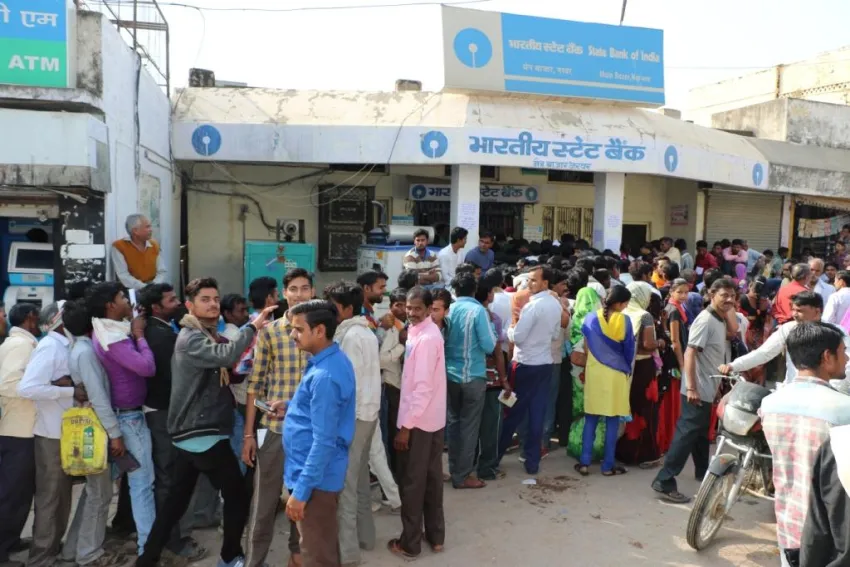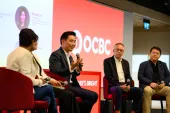
Indian banks' profitability won't be as weak as the levels seen in FY2016
But asset quality will continue to deteriorate in 2017.
Moody's Investors Service and its Indian affiliate, ICRA Limited, see subdued prospects for India's banks, with both identifying asset deterioration as a key challenge over the medium term.
"Asset quality will remain a negative driver of the credit profiles of most rated Indian banks and the stock of impaired loans. Non-performing loans (NPLs) and standard restructured loans will still rise during the horizon of our outlook," says Alka Anbarasu, a Moody's Vice President and Senior Analyst.
Here's more:
According to Moody's, such pressure on asset quality largely reflects the system's legacy problems, as relating to the strong credit growth seen in 2009-2012, when the investment plans of Indian corporates rose significantly.
Nevertheless, aside from these legacy issues, the underlying asset trend for Indian banks will be stable because of a generally supportive operating environment. While corporate balance sheets stay weak, a further deterioration in key credit metrics such as debt/equity and interest coverage ratios has been arrested.
"We expect the pace of deterioration in asset quality over the next 12-18 months should be lower than what was seen over the last five years, and especially compared to FY2016, even as we consider those remaining problem loans which have not been recognized as such in several large accounts," says Anbarasu.
In this context, Moody's also considers the Reserve Bank of India's (RBI) asset quality review (AQR) in 2015 as a particularly important catalyst in pushing banks to recognize some large accounts as being impaired. As a result, Moody's now estimates that the "true" level of impaired loans for Indian banks to be around 1-1.5 percentage points higher than the latest reported numbers.
Given the magnitude of stressed assets in the system, Moody's expects the banks to increase their focus on resolving some of the large problem accounts.
"In this regard, we expect an increased pace of debt restructuring under the various schemes offered by the RBI, including the scheme for the sustainable structuring of stressed assets (S4A), strategic debt restructuring (SDR) and the 5:25 scheme," says Anbarasu. "Nevertheless, weak reserving levels and continued pressure on profitability will limit the ability of the banks to proactively resolve problem assets under these schemes."
From ICRA's viewpoint, a muted level of credit off-take -- on the back of weak demand, increasing competition and greater disintermediation -- will continue to exert downward pressure on lending rates.
"Such a development will be partly offset by the fall in the cost of funds, but stubbornly high operating expense levels and elevated credit costs will continue to dent profitability matrices for the banks," says Karthik Srinivasan, an ICRA Senior Vice President.
"And while bank profitability is not expected to be as weak as the levels seen in FY2016, the weakness in asset quality will continue to drag on profitability indicators, with return on equity remaining in the single digits for FY2017 and FY2018," says Srinivasan.
ICRA further notes that, as of September 30, 2016, while all the public sector banks had met the minimum common equity tier 1 (CET 1) requirement of 6.75% applicable by March 2017, six also reported Tier 1 capital of less than 8.25%, the regulatory minimum. Furthermore, the overall capitalization levels of most of the public sector banks remains moderate to weak, given that they need to attain the regulatory minimum Tier 1 requirement of 9.5% by March 2019.
The Indian government's current plan of infusing INR450 billion during FY2017-FY2019 -- of which INR164.14 billion (US$2.4 billion) have been already infused in the current year -- is below ICRA's estimates of capital requirements of INR1,500-1,800 billion (US$22-26 billion) until FY2017-FY2019.
According to ICRA, of this total of INR1,500-1,800 billion (US$22-26 billion), the banks can raise around INR800-950 billion (US$11-14 billion)by issuing AT1 instruments, with public sector banks having issued AT1 aggregating to around INR200 billion (US$3 billion) in the current year.
ICRA believes that the continued level of investor appetite will remain the key factor determining future AT1 issuances, as the risk of servicing the coupon payments on these bonds has increased considerably, especially for the weaker public sector banks. This is because substantial losses in this sector in the last few quarters have significantly depleted revenue reserves.
In this context, the government may need to materially increase the quantum of capital infusions into the public sector banks, in view of the fact that investor appetite for common equity remains subdued, as evidenced by weak share price multiples.
















 Advertise
Advertise






